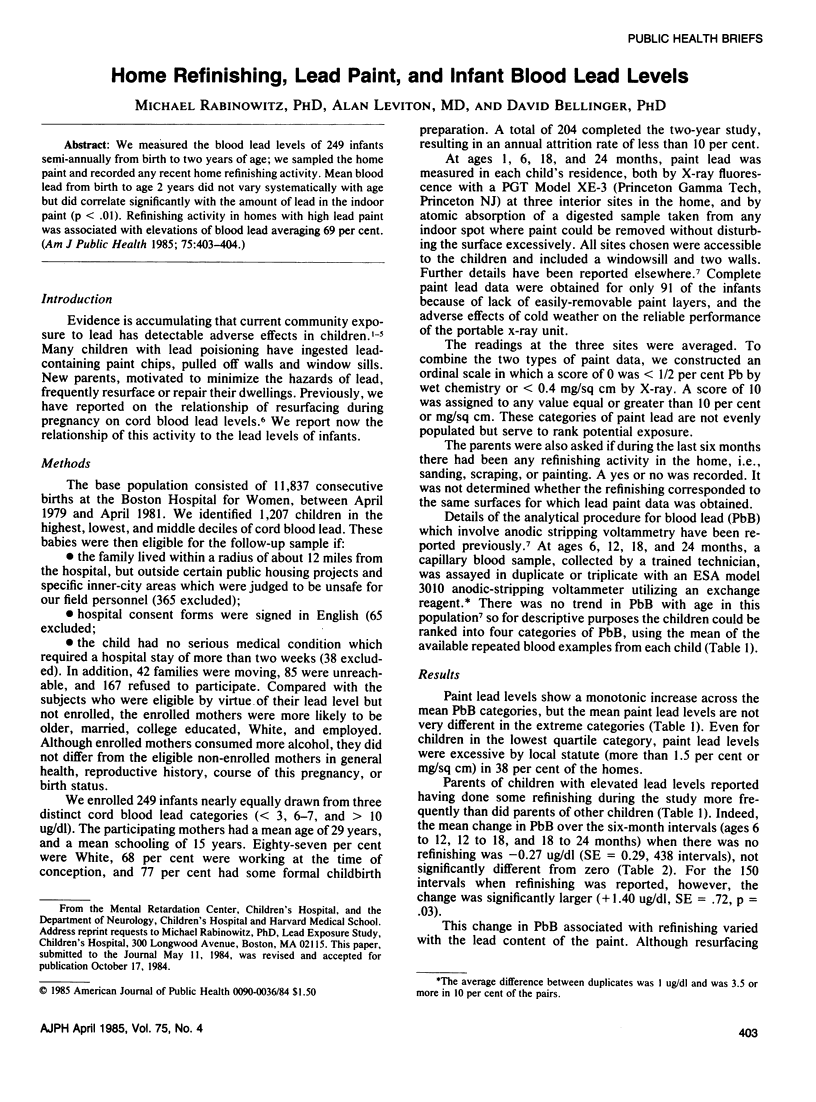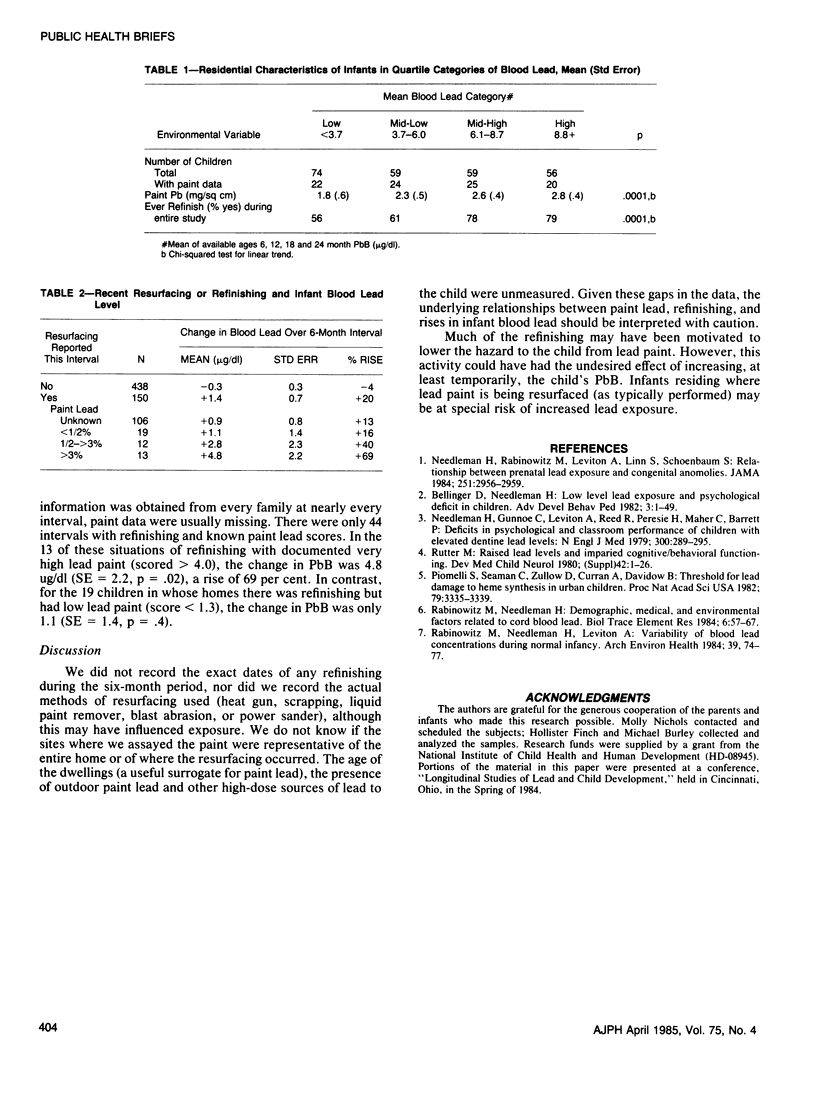Abstract
We measured the blood lead levels of 249 infants semi-annually from birth to two years of age; we sampled the home paint and recorded any recent home refinishing activity. Mean blood lead from birth to age 2 years did not vary systematically with age but did correlate significantly with the amount of lead in the indoor paint (p less than .01). Refinishing activity in homes with high lead paint was associated with elevations of blood lead averaging 69 per cent.
Full text
PDF

Selected References
These references are in PubMed. This may not be the complete list of references from this article.
- Needleman H. L., Rabinowitz M., Leviton A., Linn S., Schoenbaum S. The relationship between prenatal exposure to lead and congenital anomalies. JAMA. 1984 Jun 8;251(22):2956–2959. [PubMed] [Google Scholar]
- Piomelli S., Seaman C., Zullow D., Curran A., Davidow B. Threshold for lead damage to heme synthesis in urban children. Proc Natl Acad Sci U S A. 1982 May;79(10):3335–3339. doi: 10.1073/pnas.79.10.3335. [DOI] [PMC free article] [PubMed] [Google Scholar]
- Rabinowitz M., Leviton A., Needleman H. Variability of blood lead concentrations during infancy. Arch Environ Health. 1984 Mar-Apr;39(2):74–77. doi: 10.1080/00039896.1984.10545838. [DOI] [PubMed] [Google Scholar]
- Rutter M. Raised lead levels and impaired cognitive/behavioural functioning: a review of the evidence. Dev Med Child Neurol Suppl. 1980;42:1–26. [PubMed] [Google Scholar]


